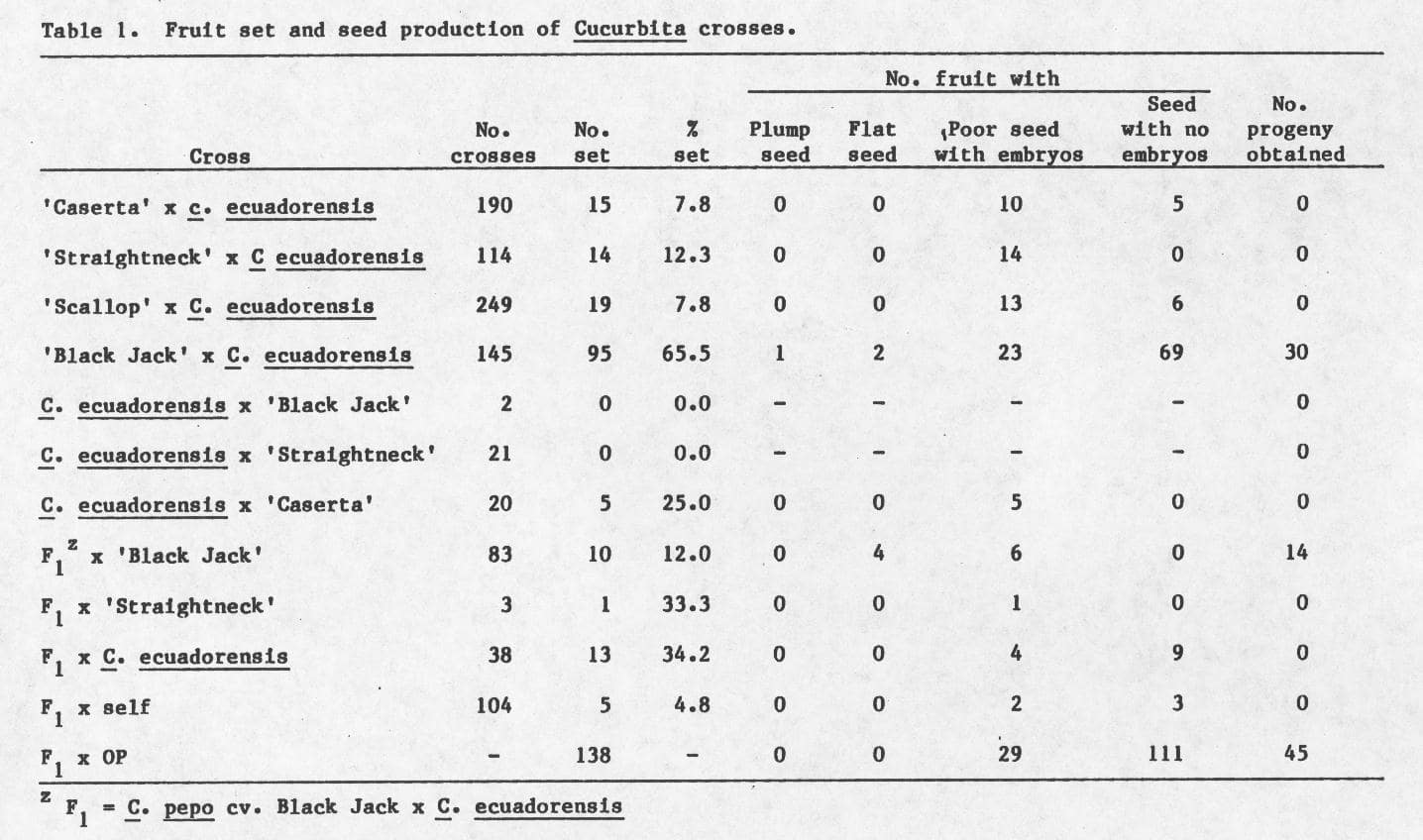Cucurbit Genetics Cooperative Report 10:88-89 (article 47) 1987
R. W. Robinson and J. W. Shail
Horticultural Sciences Department, New York State Agricultural Experiment Station, Geneva, NY 14456
The cross Cucurbita pepo x C. ecuadorensis, which is of interest for breeding squash for multiple disease resistance, was first made by Washek (2). The cross is usually difficult to make, even with embryo culture.
Our repeated attempts to cross C. ecuadorensis with C. pepo cultivars ‘Early Prolific Straightneck’, ‘Caserta’, and ‘Scallop’ were unsuccessful. Another C. pepo cultivar, ‘Black Jack’, proved to be much more compatible in this interspecific cross (Table 1). Fruit set was much better when ‘Black Jack’ was the C. pepo parent, and hybrids with C. ecuadorensis were obtained for ‘Black Jack’ but not for the other C. pepo cultivars.
‘Black Jack’ is a zucchini-type F1 hybrid. Washek (2) also succeeded in crossing C. ecuadorensis with a zucchini-type cultivar of C. pepo. Thus, a ‘Zucchini’ gene background may be helpful for accomplishing the interspecific cross, but more zucchini-type cultivars need to be tested to verify this.
Even though ‘Black Jack’ crossed more easily with C. ecuadorensis than did the other C. pepo cultivars tested, the cross is still encumbered with sterility barriers. Embryo culture was required in the initial cross, and many fruit were without embryos that could be cultured (Table 1). Fertility of the interspecific hybrid was low, but backcross seed was produced without embryo culture by using ‘Black Jack’ as the pollen parent. The interspecific hybrid was also successfully used as the maternal parent in crosses with C. moschata.
Both parental species are monoecious but the C. pepo x C. ecuadorensis hybrid was gynoecious, agreeing with Washek’s observation (2). A similar phenomenon was reported (1) for the cross C. maxima x C. moschata, which also produced a gynoecious hybrid. Staminate flowers were induced to develop on the C. pepo x C. ecuadorensis F1 by multiple applications of GA4/7 or Ag(NO3)2 . However, pollen production was scanty and no F2 seed was produced when the treated interspecific hybrid was self- or sibpollinated. The F1 plants did produce open-pollinated seed (Table 1), and the progeny indicated it was the result of outcrossing with C. pepo.
Table 1. Fruit set and seed production of Cucurbita crosses.

Literature Cited
- Robinson, R. W., M. A. Boettger, and J. W. Shail. 1978. Gynoecious sex expression in Cucurbita resulting from an interspecific cross. Cucurbit Genetics Coop. Rpt. 1:31-32.
- Washek, R. L. 1983. Cucumber mosaic resistance in summer squash (Cucurbita pepo L.). PhD. Thesis, Cornell Univ., Ithaca, NY 187 pp.